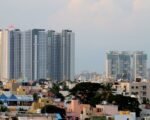Vietnam is pursuing a dual strategy to address its energy needs, balancing its commitment to greener power sources with a significant reliance on coal to prevent blackouts. The country is implementing a mix of energy-saving measures, grid upgrades, regulatory reforms, and a substantial increase in coal power to ensure a stable electricity supply. This approach comes as Vietnam faces soaring power demand and the challenge of meeting climate change commitments while providing reliable power to its growing industrial sector.
Vietnam’s energy strategy involves a complex mix of green initiatives and coal dependency. The government is investing in renewable energy projects, such as solar and wind power, to reduce its carbon footprint and meet international climate commitments. However, the rapid increase in power demand, driven by industrial growth and urbanization, has made it difficult to rely solely on green energy sources.

To avert electricity shortfalls, Vietnam has significantly increased its coal power capacity. In the first five months of 2024, coal-fired power plants accounted for an average of 59% of the country’s electricity output, with some days exceeding 70%. This reliance on coal is seen as a necessary measure to ensure a stable power supply, despite the environmental concerns associated with fossil fuels.
The government has also implemented energy-saving measures and grid upgrades to improve efficiency and reduce consumption. These efforts include promoting energy-efficient appliances, upgrading transmission lines, and encouraging businesses to adopt energy-saving practices. While these measures are essential for long-term sustainability, they may not be sufficient to meet the immediate power demands.
Challenges and Short-Term Solutions
Vietnam’s reliance on coal presents several challenges, both environmentally and economically. The country’s commitment to reducing its reliance on fossil fuels has been undermined by the need to prevent blackouts and support industrial growth. This has led to a significant increase in coal consumption, which has environmental implications and raises questions about the country’s ability to meet its climate goals.
The government is also facing difficulties in curtailing power consumption. Despite efforts to promote energy-saving practices, many businesses in urban areas continue to use excessive amounts of electricity. This has made it challenging to achieve the desired reductions in power consumption and highlights the need for broader sector-wide reforms.
In the short term, Vietnam is banking on coal to provide reliable electricity. The construction of new coal-fired power plants and the expansion of existing facilities are seen as necessary steps to meet the growing power demand. However, this approach may signal a setback in the country’s efforts to transition to greener energy sources.
Long-Term Vision and Reforms
While coal remains a critical component of Vietnam’s energy strategy, the government is committed to pursuing long-term reforms to promote sustainable energy. This includes investing in renewable energy projects, enhancing grid infrastructure, and implementing regulatory changes to support the transition to greener power sources.
The government has secured international funding to support its green energy initiatives. In 2021, international donors committed $15.5 billion to help Vietnam phase out coal and invest in renewable energy projects. These funds are being used to develop solar and wind power projects, improve energy efficiency, and support research and development in green technologies.
Vietnam’s long-term vision also includes broader sector-wide reforms to create a more sustainable and resilient energy system. This involves enhancing regulatory frameworks, promoting private sector investment in renewable energy, and fostering innovation in energy technologies. By pursuing these reforms, Vietnam aims to reduce its reliance on coal and achieve its climate goals while ensuring a stable and reliable power supply.








